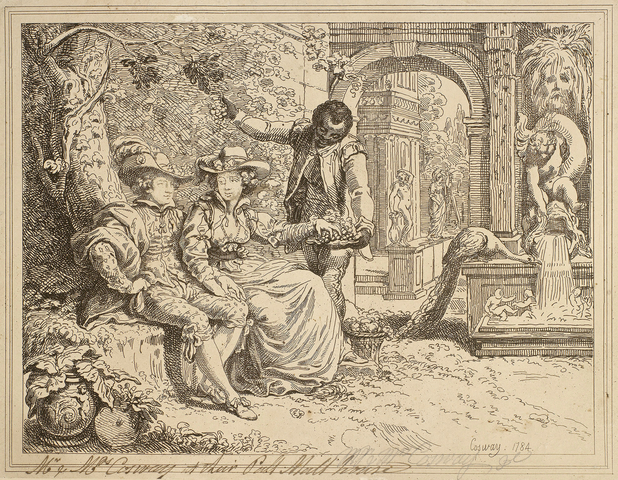Professor Vincent Carretta on his research visit to Windsor
Professor Vincent Carretta, University of Maryland, was an Omohundro Institute Georgian Papers Fellow who spent last November researching at the Royal Archives.
I was delighted to have been chosen the Inaugural Senior Fellows from Omohundro Institute to participate in the George III Papers Project, which is co-sponsored by the Institute and King’s College, University of London. For the past thirty years or so I’d fantasized about what the Royal Archives, Royal Library, and Print Room at Windsor Castle contain that might be relevant to any of my research projects.
I’ve spent the last two decades editing the works of, as well as writing about, English-speaking authors of African descent before 1800. Many of them claimed, or were said to have had, some connection to the Georgian Court, whether in person or by correspondence. The Omohundro fellowship gave me the chance to dig in the holdings at Windsor Castle to try to discover evidence of those connections. My earlier work on those authors enabled me to appreciate the significance of any relevant material that was hitherto undiscovered.
Ideally, the relationship between a researcher and an archive is symbiotic: each benefits from the encounter with the other. I luckily had that experience at Windsor Castle. One example of such good fortune was the copy in the Royal Library of Quobna Ottobah Cugoano’s abolitionist book, Thoughts and Sentiments on the Evil and Wicked Traffic of the Slavery and Commerce of the Human Species, published in London in 1787. I knew from a holograph letter by Quobna Ottobah Cugoano, alias John Stuart, in the Gloucestershire Record Office that Cugoano had given a copy of his book to the Prince of Wales, the future Prince Regent, and later George IV. And there it was!
The Royal Library now has my transcriptions of all of Cugoano’s known surviving manuscript letters, one of which is addressed to King George III. I also explained why I thought that Cugoano probably presented a copy of his book to the Prince in person in 1787: as the servant of Richard Cosway, who had been appointed the Prince’s Primarious Pictor (Principal Painter) in 1785, Cugoano had frequent access to the Prince. And I was able to add some information to the Print Room by identifying Cugoano as the black servant in Cosway’s rare etching in its collection of Mr and Mrs Cosway at their Pall Mall House after painting of 1784

Mr and Mrs Cosway at their Pall Mall House, by Richard Cosway (bapt.1742 d.1821), RCIN 653010. Royal Collection Trust/© Her Majesty Queen Elizabeth II 2016
I’m very grateful to the Omohundro Institute for having given me the opportunity to spend time in the holdings at Windsor Castle, which I think was mutually beneficial.
This post and others also appear on our sibling GPP site at the Omohundro Institute.
